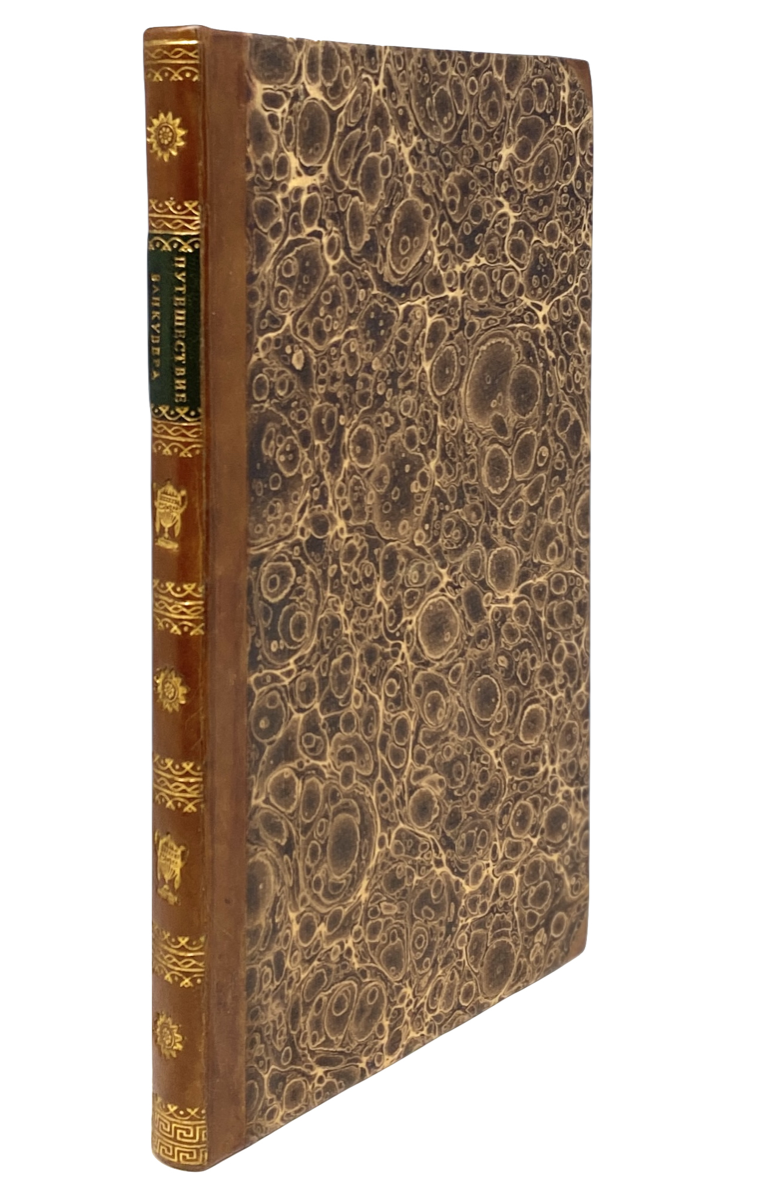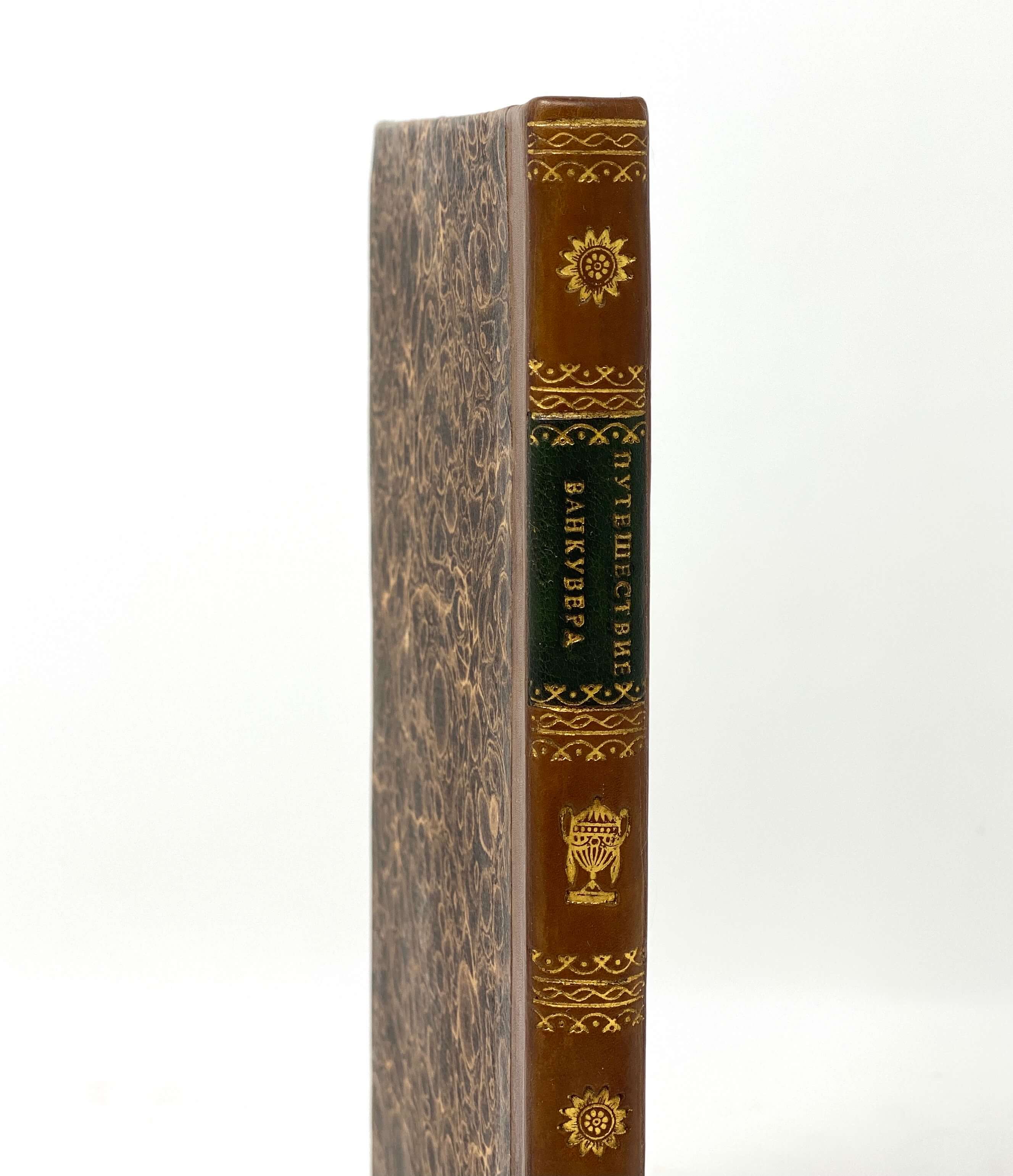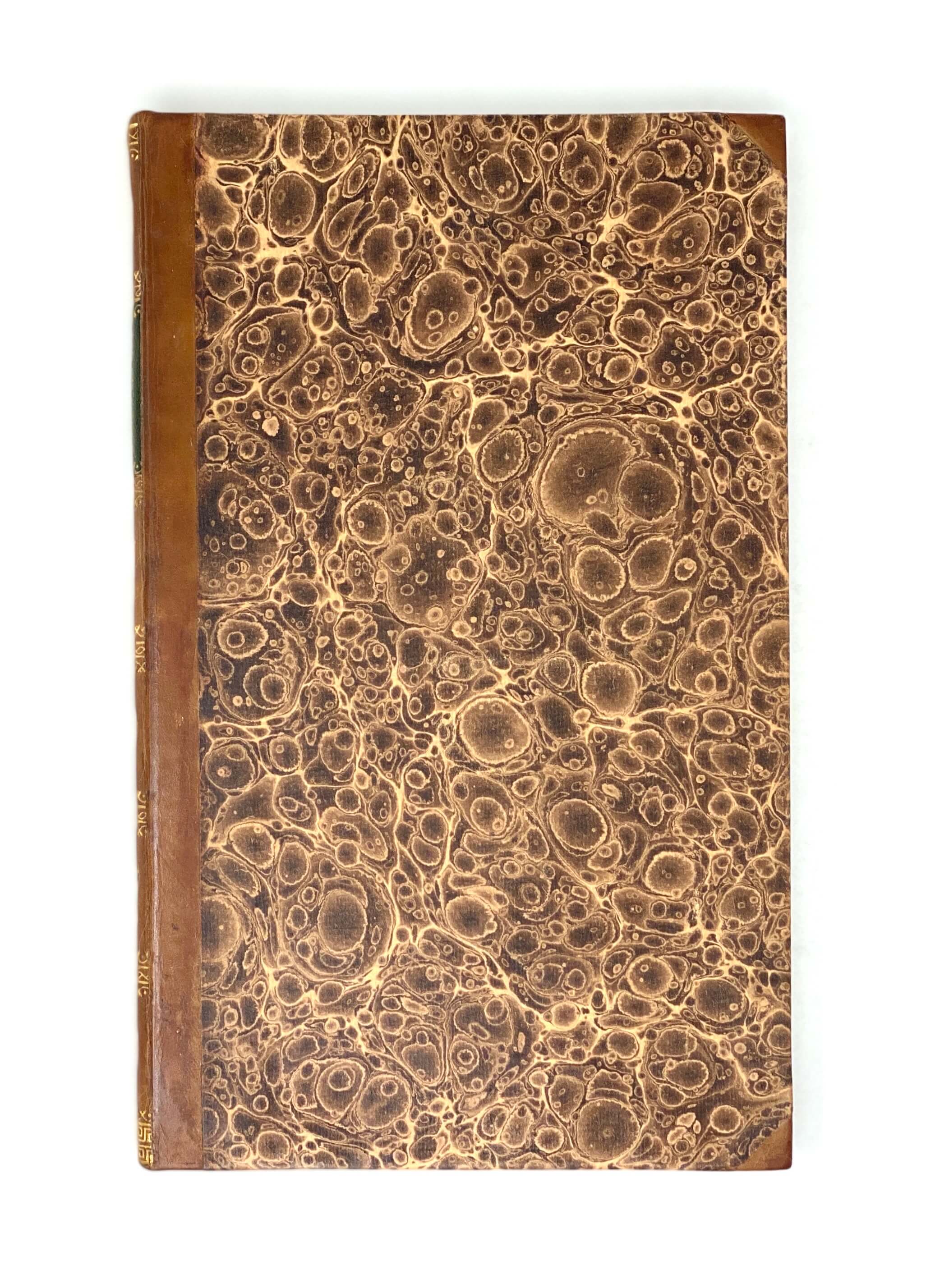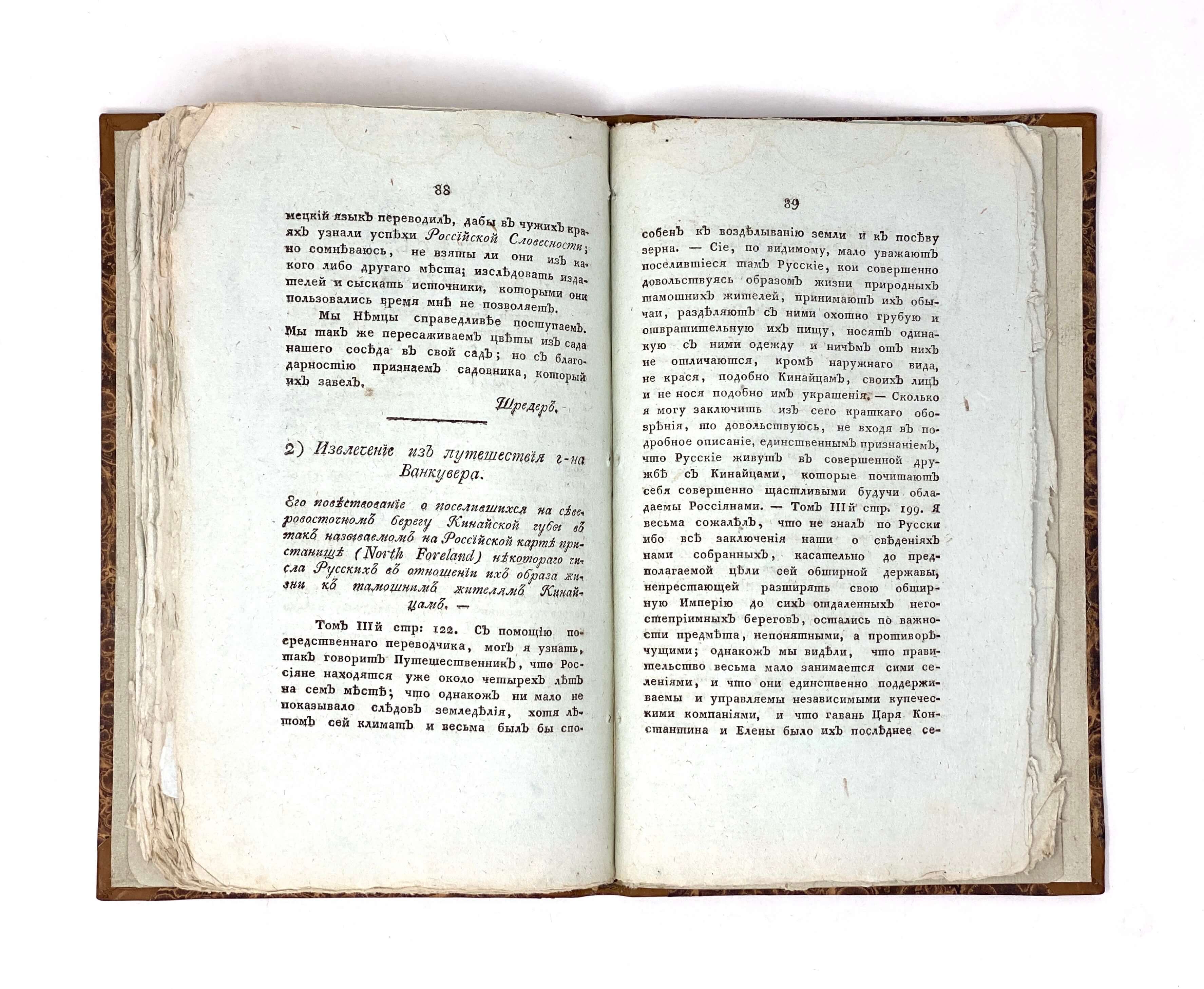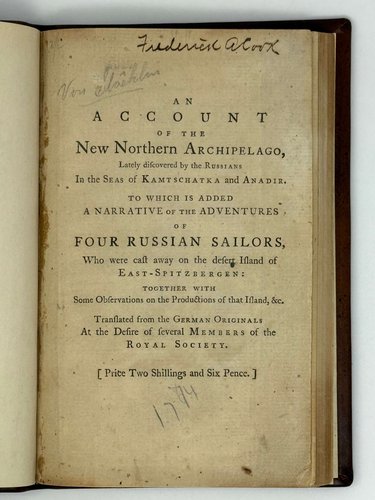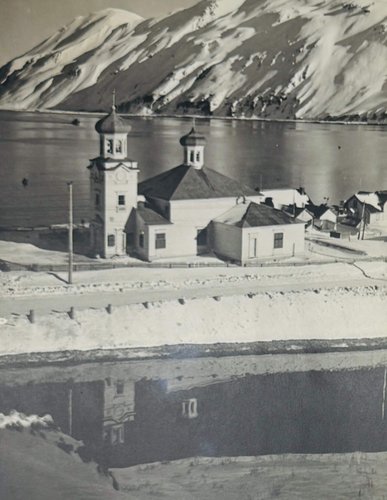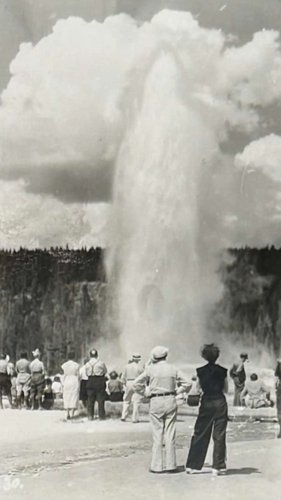
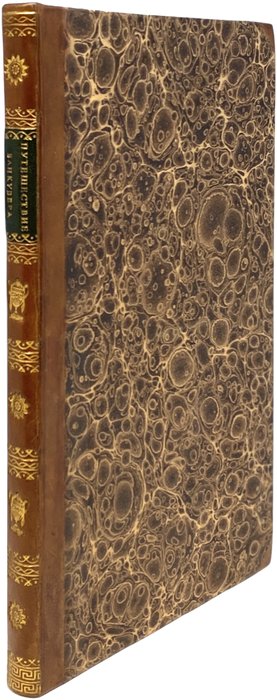
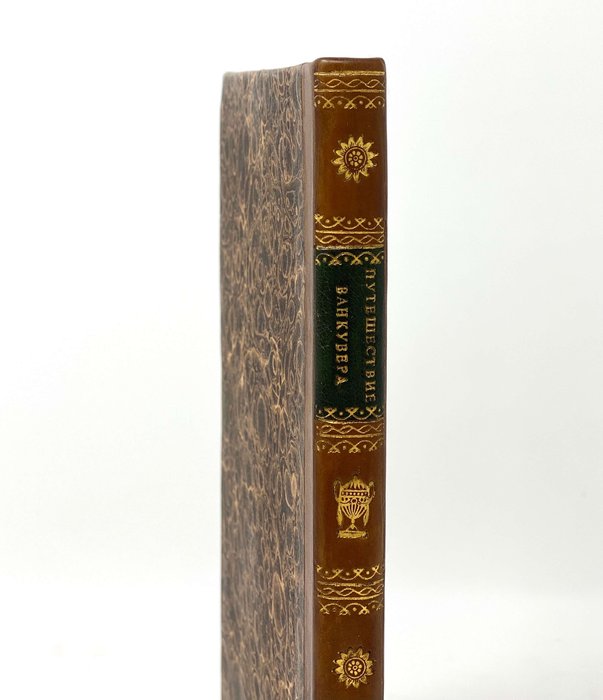
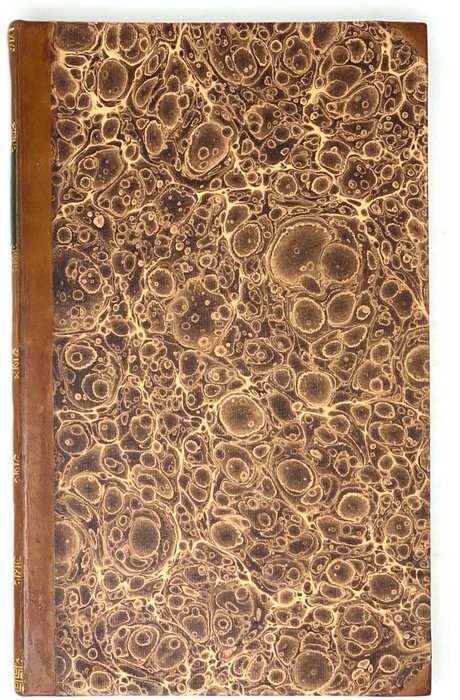
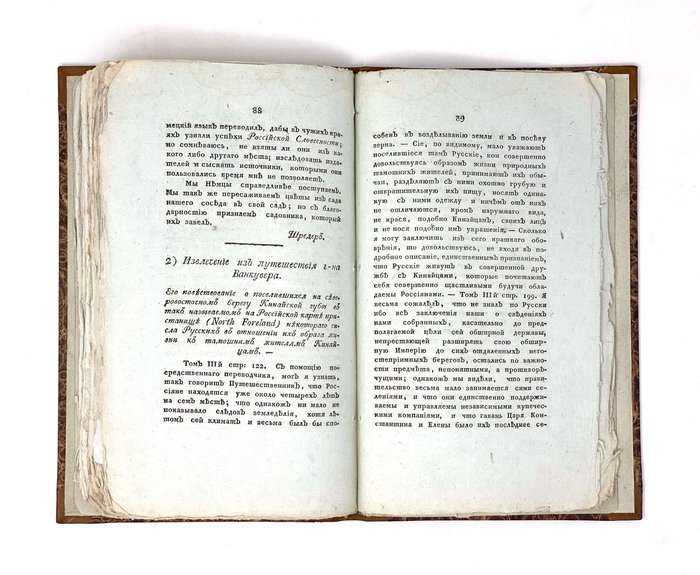
#RA6
1806
First and only Russian edition. Part 1, book 3. Octavo (23x14,5 cm). [2 – half title], 3-103, [1 - errata] pp. Period style brown half calf with marbled papered boards; spine with gilt-tooled decorations and a dark green label with a gilt-lettered title. The first leaf slightly soiled, the last two leaves with repairs to the upper margins, slightly affecting the page numbers, but overall a very good uncut copy.
Very rare Russian imprint with only two paper copies found in Worldcat - Yale University and New York Public Library (both holding complete sets of the magazine, comprising four parts, each in three books; no holdings of odd volumes found). Our copy possibly misses the table of contents (2 pp.) but doesn’t lack the title page (as only the first “books” of each part of this magazine were published with title pages, see the copies from the Russian National Library).
This is a very early (possibly, the first) Russian translation of George Vancouver’s famous account of his voyage to the Northwest coast of America in 1790-1795 (“A Voyage of Discovery to the North Pacific Ocean, and Round the World, <…> Performed in the Years 1790. 1791, 1792, 1793, 1794, and 1795…”, London, 1798, 3 vols.).
The article is an excerpt from chapters V and VII of Vol. 3 of Vancouver’s account; it describes the interactions of Vancouver and his party member Joseph Whidbey with Russian promyshlenniki (fur hunters and traders) and native inhabitants of the Cook Inlet and Prince William Sound in May and June 1794. The first part of the article (a translation of the text on pp. 122-123 of Vancouver’s original account) talks about the Russian station in the so-called North Foreland, located on the northern shore of the Kenai Bay, or Cook Inlet (near modern-day Tyonek village). The second part of the article (see pp. 199, 200-201 of Vancouver’s account) describes the spread of Russian settlements in Alaska and notes that Port Etches on the Hinchinbrook Island in Prince William Sound (named “the Bay of Konstantin and Elena” by the Russian translator) is the easternmost Russian station in America. Both North Foreland and Port Etches stations belonged to the company of a Siberian merchant Pavel Lebedev-Lastochkin, a pioneer Russian fur trader in Alaska and one of the main competitors of Grigory Shelekhov and the future Russian American Company. He was active in the Cook Inlet and Prince William Sound since the late 1770s, refused to join the Russian American Company and went bankrupt in 1798. In the article, Vancouver mentions one “Mr. Smyloff,” in fact, Pyotr Samoilov, a commander of “Sv. Georgii” galiot, which belonged to Lebedev-Lastochkin’s company. The text also describes friendly relations between the Russians and native Alaskans and predicts a prosperous future for Russian settlers in America (see more about Lebedev-Lastochkin’s Company in: Solovjova, K., Vovnyanko. A. The Rise and Decline of the Lebedev-Lastochkin Company: Russian Colonization of South Central Alaska, 1787-1798// The Pacific Northwest Quarterly. Vol. 90, No. 4 (Fall, 1999), pp. 191-205).
The comparison of the text published in the “Litsei” with the text of the first Russian edition of Vancouver’s account, published over twenty years later (see pp. 221-222, 367-370 and 370-372 in vol. 5 of: Puteshestviye v Severnuyu Chast Tikhogo Okeana i Vokrug Sveta, Sovershennoye v 1790, 1791, 1792, 1793, 1794 i 1795 godakh Kapitanom Geogiyem Vankuverom. SPb., 1827-1838, 6 vols.), reveals that the translations are completely different. This proves that the “Litsei’s” article is an early, independent (and very likely, the first) Russian translation of Vancouver’s account, most likely made by the magazine’s publisher, Ivan Martynov (1771-1833). He was a Saint Petersburg philologist, translator and educator, a member of the Russian Academy, and author of the statutes of several Russian Universities. The magazine was issued in 1806 only and consisted of four parts (each in three books); its main body contains translations from ancient Greek and Roman, and European writers (Jean de La Fontaine, Christoph Wieland, Gotthold Lessing, Jean Paul Richter, and others) and works of contemporary Russian poets. The magazine also included articles on political and cultural topics, relations from the Russian Academy of Sciences, reviews on the latest theatre performances, &c.
This issue also contains “An extract from the voyage of Mr. Laperouse” (pp. 94-95). Although titled “His narration about the indigenous inhabitants of Yakutsk and the nearby lands,” the excerpt is dedicated to Russian America. The first part talks about the Alaskan voyages of Russian promyshlenniki, who “leave Okhotsk in June <…>, and heading to the East, visit different islands for three or four years.” The original text was published in vol. 3 of the official account of Laperouse’s voyage and related to his stay in Kamchatka in September 1787 (Voyage de La Perouse autour du monde… Paris, 1797, vol. 3, pp. 159-160). The second part, although starting with the words “Near Yakutsk…,” describes the indigenous people from Porte des Francais (Lituya Bay in southeastern Alaska), which Laperouse discovered in July 1786 (Voyage de La Perouse autour du monde… Paris, 1797, vol. 2, pp. 192). Laperouse describes them “as cruel and rude as their land is mountainous and savage, <…> they are like hawks in the air or wolves and tigers in forests.” An abridged version of this part in different translation was published in the first Russian edition of Laperouse’s account (Puteshestviye Laperuza v Yuzhnom i Severnom Tikhom Okeane v Prodolzheniye 1785, 786, 787 i 787 godov/ Transl. by G.L. Golenishchev-Kutuzov. Part 2. St. Petersburg, 1802, pp. 22-23). The first part, talking about the Alaskan voyages of Russian promyshlenniki, was not published, as the translation by Golenishchev-Kutuzov wasn’t finished in publication.
Overall an important rare Russian publication of Vancouver’s and Laperouse’s accounts on Alaska.

